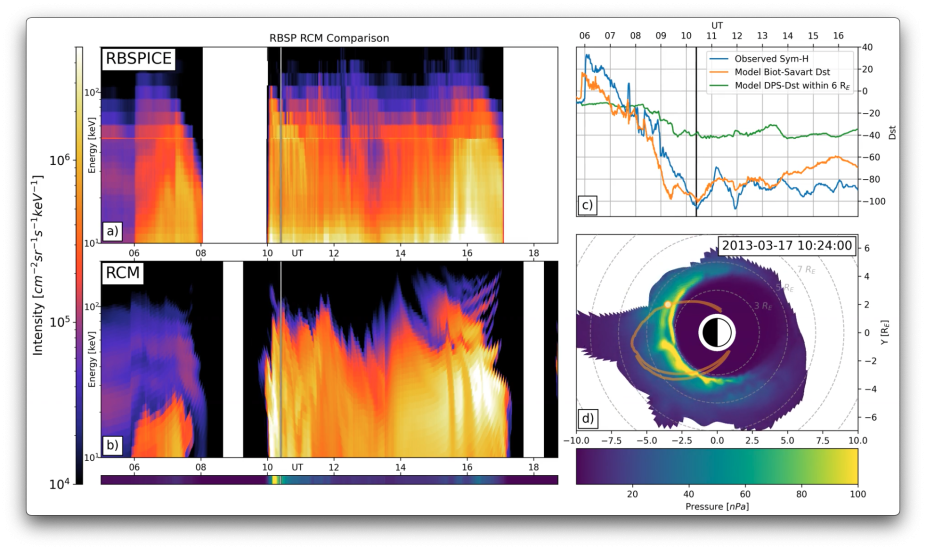JGR Space Physics: The formation of the ring current is one of the defining features of the near-Earth space response to solar storms. While it is known that the ring current originates from Earth’s magnetic tail, the relative roles of different transport mechanisms remains unclear. In this study, we utilize numerical modeling to investigate ring current buildup for a specific solar storm, and find that flows that are medium scale relative to the system size and referred to as plasma “bubbles”, are responsible for at least half of the total buildup of ring current plasma. Our analysis also shows that the bubbles displace some of the background plasma on their way Earthward, which is important when calculating their net contribution to the ring current. The modeled ring current energy spectrum is in good agreement with spacecraft observations, and the evolution of the energy spectrum is driven by both an evolving plasma population in the tail and by energy-dependent charge exchange. The ability to accurately model the complex interactions between the ring current and Earth’s geospace system is critical for understanding the full impacts of solar storms.

Comparison of proton intensities between (a) RBSPICE and (b) RCM for the full energy spectra between 10 and 200 keV. (c) Comparison between the Observed Sym-H (blue), that calculated from the simulation (orange), and the DPS-Dst evaluated in the model within 6 RE (green), the same as in Figure 1. (d) RCM pressure and RBSP-B's full trajectory (orange line) and current position (white circle with orange border) mapped along field lines to the equatorial plane. The vertical lines in panels (a), (b), and (c), and pressure and spacecraft location in panel (d), all correspond to the time indicated in panel (d). The thin colored bar below panel (b) shows the RCM pressure at the spacecraft location for a given time, with the same colorbar as panel (d).